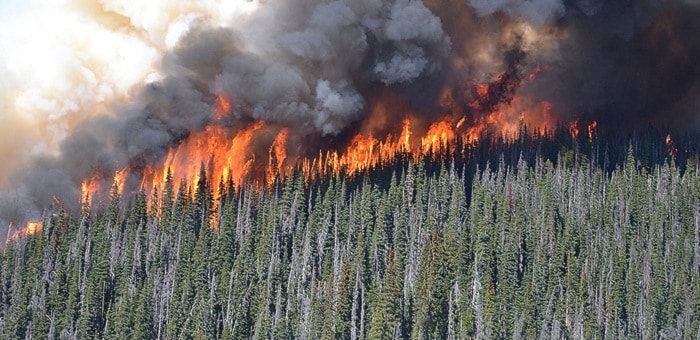VICTORIA – It’s time to look beyond the protests and political battles around climate change that dominated 2014, and look at the year and the decade ahead.
From the California drought to shifting forest patterns across B.C., there is evidence that our climate is changing more rapidly. Public debate consists mainly of squabbling about the significance of human-caused greenhouse gas emissions, rather than what can be done to prepare.

A draft discussion paper from the B.C. forests ministry on wildfire control was released in December after an access to information request. “Climate Change Adaptation and Action Plan For Wildfire Management, 2014-2024” describes the progress made in the province’s community forest fire prevention plan, and its goal to create “wildfire resilient ecosystems and wildfire adapted communities” over the next 10 years.
The final discussion paper is to be released early in 2015, but the key research is in. It estimates that by 2017 there will be 788 million cubic metres of dead pine in B.C. forests. Fires in these areas spread 2.6 times faster than in healthy green stands, up to 66 metres per minute.
The report calls for fuel management beyond community boundaries to stop “mega-fires” by creating landscape-level fuel breaks, with targeted harvesting, prescribed burning and new silviculture practices.
It notes that bark beetle infestations and bigger, hotter fires are being seen across North America, with costs rising along with urban development. For example, the 2011 Slave Lake fire in northern Alberta generated the second largest insurance charge in Canadian history.
The costs of preparing are huge. The costs of not preparing could be catastrophic.
Also in 2014, the B.C. government appointed an advisory committee to prepare for the renewal of the Columbia River Treaty with the United States.
While this 1964 the treaty has no end date, its flood control mandate expires in 2024. I spoke with Deborah Harford and Jon O’Riordan, members of the Simon Fraser University Adaptation to Climate Change Team (ACT), who, along with ACT senior policy author Robert Sandford, have written a provocative book on the treaty. They hope it will help lead to a renewed agreement that will be a model for a changing world.
“If you’re looking ahead 60 years from 2024, there’s a lot of climate change projected in that period, for British Columbia and the U.S.,” Harford said. “For the B.C. side, we’re looking at heavy precipitation and potential increase in snowmelt runoff, while in the States, you’re getting the opposite, much less snow.
“There will probably be no snowpack left down there, and they’re looking at the prospect of quite drastically lower flows in the summer.”
The treaty, sparked by devastating floods in 1948, led to construction of three dams on the B.C. side and one at Libby, Washington that backed up Kookanusa Lake into B.C. Between that reservoir and the Arrow Lakes, 110,000 hectares of B.C. land was flooded, including orchards, dairy farms and the homes of 2,000 people.
Those dams hold back spring flood water and provide for irrigation that has allowed Washington to expand its agriculture to a $5 billion-a-year industry. The treaty shares the value of hydroelectric power generated by the many downstream U.S. dams such as the Grand Coulee, but it pays B.C. nothing for agricultural benefits that were achieved at the cost of B.C. farms and aboriginal territories.
O’Riordan notes that climate shifts create a strategic benefit for B.C. The U.S. has no more dam capacity to exploit, and needs us more than ever, for flood protection and water supply.
Tom Fletcher is legislature reporter and columnist for Black Press.
Follow me on Twitter: @tomfletcherbc
